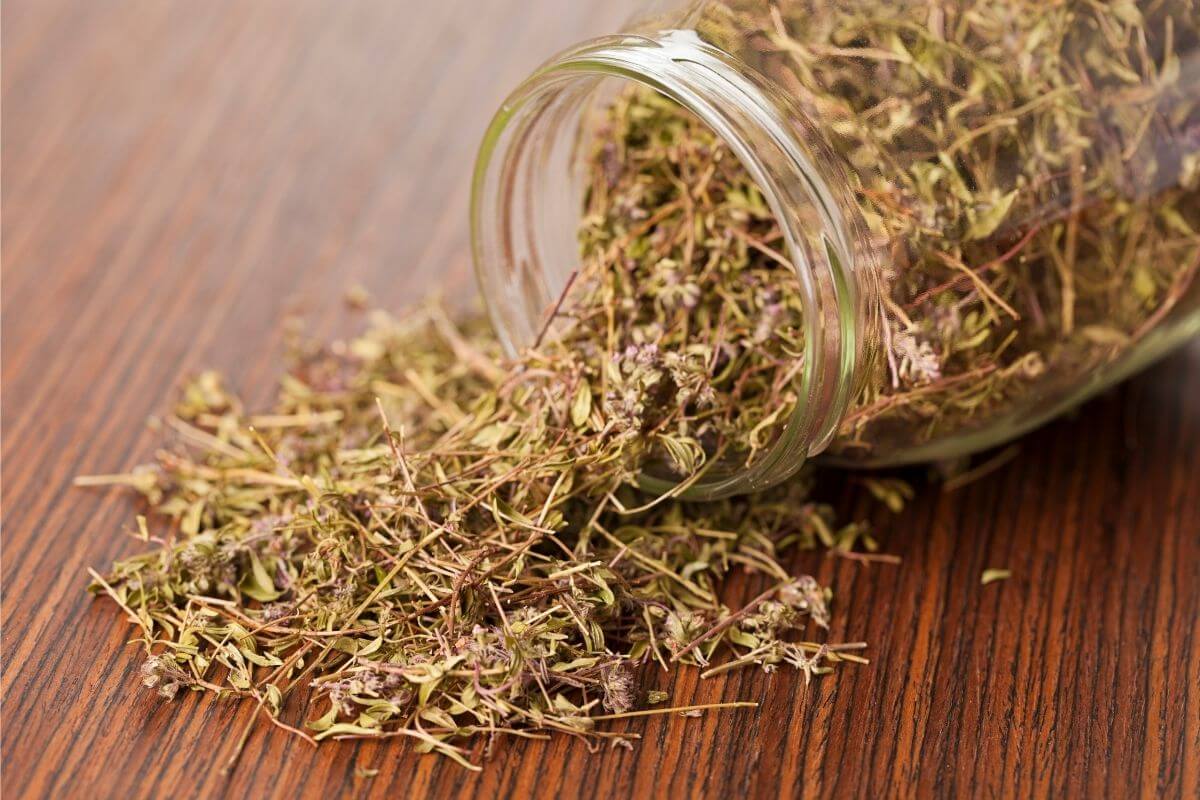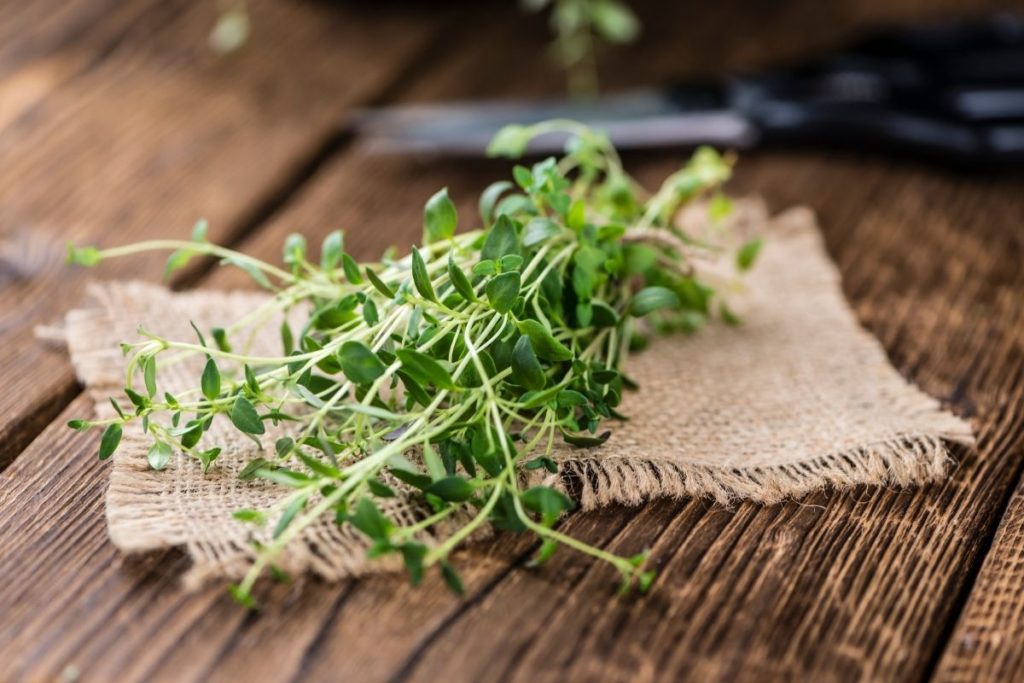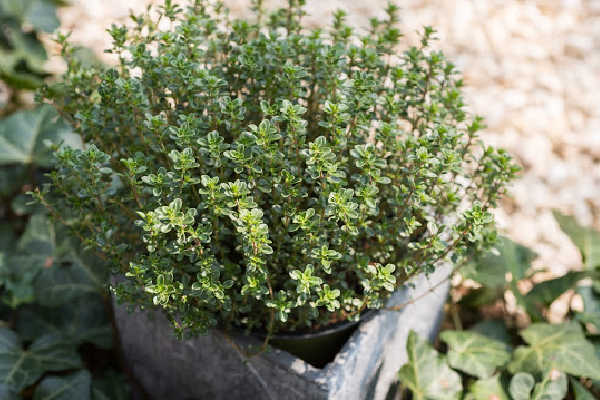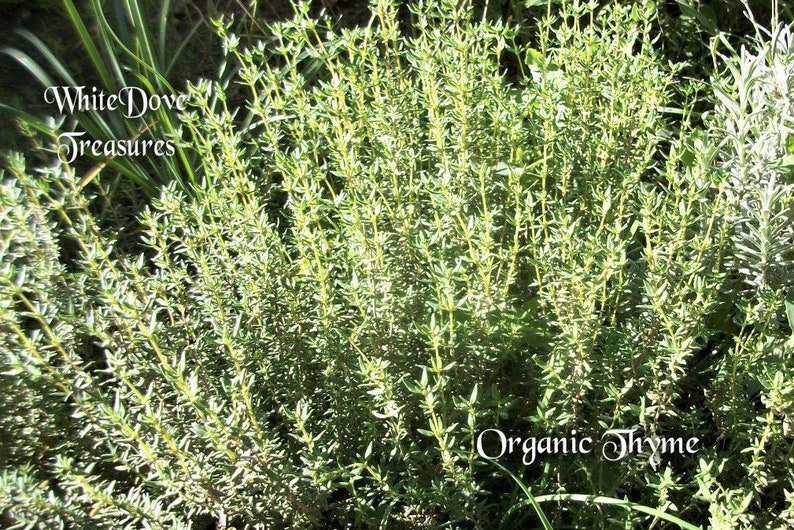

Here you can find the five best substitutes for fresh thyme that you can use in stews, season soups, or in meat dishes. 5 Best Substitutes for Fresh ThymeĪny fresh herb can be the best substitute for thyme that can be used in all savory and sweet recipes. Many of them look really pretty on the plate, and they taste good whether they are raw or cooked.The most interesting about this herb is that it is available in more than a hundred varieties, and they are mostly known for their flavors, such as caraway thyme, orange thyme, and zaatar thyme. There are a lot of different fresh herbs which can be a great substitute of thyme. Thyme, when used with thought and care, may transform a regular meal into a gourmet experience. Final Words on How Much a Sprig of Thyme Is You may substitute this in dishes like lentil and potato stew or roasted vegetable pie. Instead of more Italian or Mediterranean recipes, choose French or Northern European ones for this one. The majority of the other plants on this list are also commonly included, with lavender being an exception. This is somewhat of a substitution, but kind of not, since thyme is typically listed among the first few ingredients. It has a spicy flavor, which, depending on the recipe, may cause your finished product to also have a spicy aftertaste.Ī dried spice mixture is called herbs de Provence. Summer savory, often known as savory, is the annual type that is grown more frequently nonetheless, either summer savory or winter savory can be substituted for thyme in recipes. Tomato-based or Mediterranean meals benefit greatly from the addition of fresh basil however, dried basil serves no purpose and should be avoided.

Because it is a little bit milder than oregano, the terms are frequently interchanged.īasil is the furthest departure from the other herbs here, yet in certain preparations it makes a great stand-in for thyme. Marjoram is another ideal 1:1 alternative because it is quite similar to oregano and is hence very near to thyme.īoth fresh and dried versions are tasty. It tastes very well in soups with broth, as this one with cauliflower and potatoes, but not so much in meals with tomatoes.

Since rosemary belongs to the same family as thyme (Lamiaceae) along with oregano, marjoram, and other members, it does share some flavor characteristics with thyme. You should use a little less rosemary because its flavour is a little stronger. Use only the leaves for either (unless steeping or adding to vegetable broth). Rosemary is classified as a woody herb, while thyme is only classified as such when it reaches a certain age. Oregano can be used in place of thyme in virtually all of the recipes that call for it. There is really little distinction between the two flavors given that they are both derived from the mint family of herbs. Whether you use fresh or dried oregano, you’ll find that it makes an excellent substitute for thyme. Here are some common substitutes of thyme: On the other hand, fresh thyme takes up half a cup of dried thyme’s weight.Īlso, dry thyme can be substituted for fresh lime with a ratio of 1:1 (1 tbs of dry thyme = 1 tbs of fresh thyme).

When converted to dry form, one sprig of thyme is equivalent to half a teaspoon. Instead, what you’re pursuing are the leaves.Ī sprig can be cut from the plant and the leaves can be removed by holding it from one end and gently rubbing it off with your fingers and thumb. It’s important to know that the thyme plant’s stem is far too tough for human consumption. If we had to calculate an exact measurement, a sprig of thyme would contain between 14 and 34 teaspoons of the tiny thyme leaves. This is because thyme grows more compactly than boxwood. The leaves are shaped like ovals and they narrow to a point at the very end.īecause of its similarity in look to boxwood but lesser size, thyme is sometimes compared to a miniature version of the bush.
Sprig of thyme substitute full#
It has long stalks that are woody, and on those stalks are tiny green leaves that run the full length of the stalk. Thyme resembles a little bush in appearance. If your recipes also call for thyme and you don’t know how big of a sprig of thyme to use, then let’s dig into the details. But a more arbitrary measurement is they are 4 to 5 inches long. A sprig of thyme does not have a precise measurement or weight. Thyme is a tough plant that has tiny green leaves and a woody stem, whereas a “sprig” is a single branch of that plant. It’s not uncommon for a recipe to ask for a few sprigs of thyme.


 0 kommentar(er)
0 kommentar(er)
